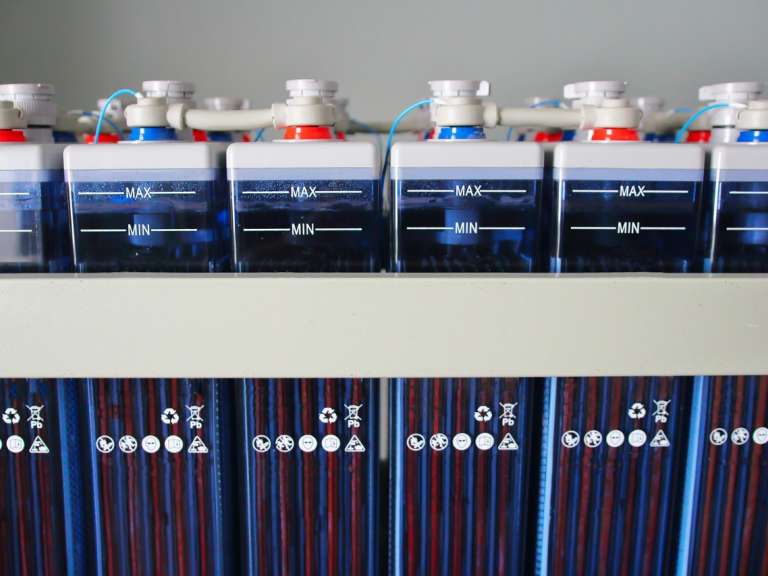Energy Storage Faces Stiff Competition in a Modernizing Grid
Bentham PaulosThe electrification of the global economy offers big opportunities for energy storage, but also creates new forms of competition.

Of all the emerging energy technologies, none has the sizzle of energy storage. With tech god Elon Musk acting as cheerleader in chief, batteries are hailed as the next big thing by everyone from utility executives to environmentalists.
In the popular and trade press, coal and gas generators are often pitted against wind and solar for control of the 21st-century power system, with batteries tossed in as the necessary complement to intermittent renewables.
However, the truth is more complex. It is true that wind and solar will drive a very different power grid from today's system of dispatchable generation and passive consumers. There are many technologies vying to provide vital integration services, though, and many more on the way. Energy storage will face stiff competition.
A new study from the ESA makes the case for how storage technologies are needed for an increasingly electric, increasingly renewable future.
The ESA worked with Navigant Research to develop a report titled 35x25: A Vision for Energy Storage. Their analysis lays out a scenario for 35 GW of deployment, which would deliver $4 billion of grid savings by 2025. Much of this growth, they say, will be on the grid side of the meter and will include large-scale pumped hydro, compressed air, and molten salt technologies, as well as batteries.
"This is undoubtedly ambitious," the report says, "and will require fundamental changes in how the grid is planned and engineered, including a reform of US energy markets and regulations."
While integration of wind and solar is one use case for storage, the ESA counts many others.
The first is providing grid services, such as in grid operator PJM's competitive ancillary service market. Fast-acting batteries are great at providing very precise voltage and frequency support, as well as on-demand capacity.
Even more value comes from the enhancement of transmission and distribution assets, accounting for about 60 percent of the cumulative benefits that Navigant counts by 2025. Storage can meet peak demand periods, where electricity prices can be 100 times the average price. Commercial and industrial customers could save $1 billion through reduced demand charges and energy arbitrage, reports the ESA.
Storage can also help avoid outages and help those affected recover more quickly from them. Customers can incur large costs from power outages, measured as the value of lost load (VOLL). According to the ESA, costs are typically higher for commercial and industrial customers—as much as $20,000 per MWh—than for residential.
The ESA says that VOLL is rising as businesses and factories become more dependent on electricity, and that it will be worth a cumulative $295 billion by 2025. If storage can help avoid just 10 percent of those losses, it would be a significant payback.
The growing electrification of other sectors presents a unique irony to the storage industry: It's both an opportunity for growth and a new source of competition.
The ESA argues that the increasing electrification of the grid will only increase the need for reliable service. Transportation, heat, and industrial applications will be just as harmed by power outages as current electricity uses. In fact, the growing reliance on cloud computing—100 percent powered by electricity—will extend the impact of blackouts to practically every sector.
"With the grid at the nexus of these networks, disruptions to the grid will ripple throughout the economy even more, reinforcing the need for a disruption-proof grid," the ESA report says.
And storage, it claims, is vital. "Servicing these dynamic new sectoral network needs with traditional inflexible grid resources will quickly become cost prohibitive, making new electrified networks untenable."
The irony is that these sectors will also bring their own integration capabilities that will directly compete with storage in providing grid services.
The electrification of transportation means a lot more batteries, but on wheels. Research has shown that most vehicles sit idle for over 90 percent of the time, making them available for vehicle-grid integration (VGI) services. Since the batteries were bought to move the car, using them to provide grid services means free money to their owners. Stationary storage companies will have a hard time competing with free.
The electrification of buildings also means more competition. Building energy management systems (BEMS) are sophisticated whole-building software programs that allow third parties to sell demand response services into power markets. Electric water heaters, since they store energy as hot water, can be turned on or off by a utility or grid aggregator, providing more or less power demand, as needed.
Even energy management systems as simple as a smart thermostat spell trouble. Austin Energy has deployed smart thermostats in 73,000 homes in Austin, Texas, according to Electric Light & Power. The thermostats use the thermal energy storage of the structure to store coolness on hot summer days, allowing the utility to shut off air conditioners during expensive afternoon peak hours. Debbie Kimberly, vice president of Customer Energy Solutions, writes in Electric Light & Power that all demand response programs combined saved Austin Energy customers $2.25 million in avoided generation costs in 2016 and cut energy demand by 50 MW.
Wind and solar generators themselves are increasingly using smart inverters that can supply frequency response and other services, all controlled through internet signals.
There is no question that energy storage can provide a host of valuable services. But in the rapidly changing power system, it faces stiff competition from other emerging technologies.
Demand-side response technology can help utilities better manage load dispatch at times of peak demand, gain greater insight into customer behavior, and capture new revenue streams.
Eradicating hazards completely is impossible, but new power plant safety innovations can mitigate risk.
The power plant technology upgrade should start with a healthy infusion of data and analytics, just as the baseball industry has seen in recent years.